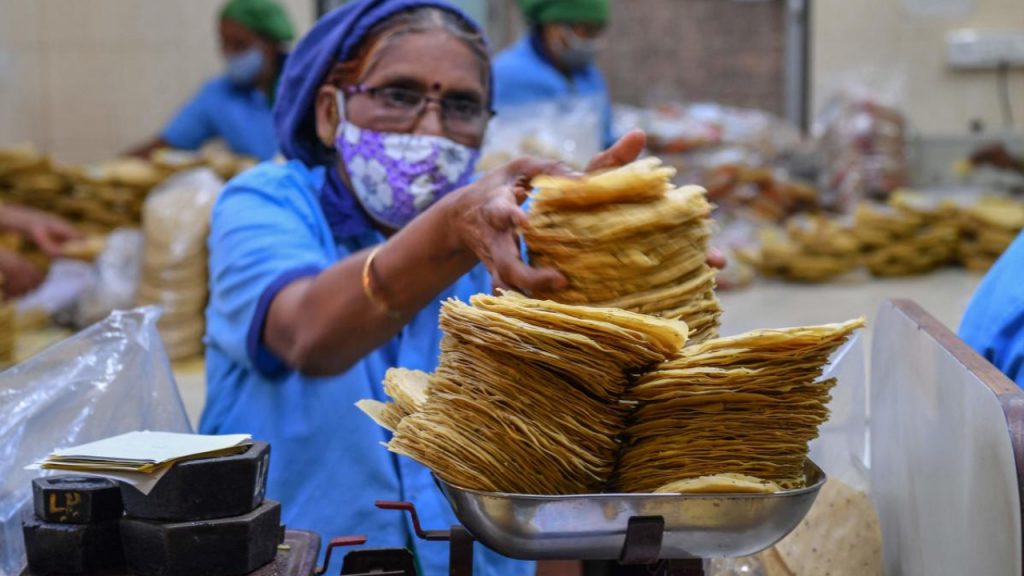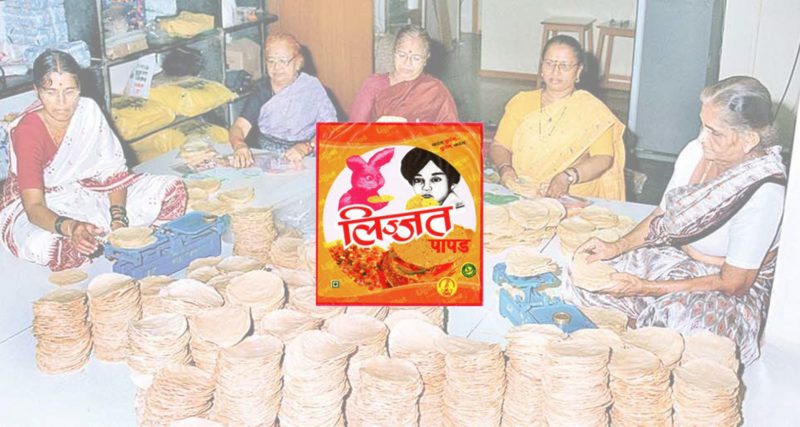Lijjat Papad is a household name present in every state all over India. But while most of us have enjoyed the traditional snacks at least once in our lives, we do not have any idea about the inspiring success stories of the same. This company also started with a success story behind the making of a distinctive brand that 7 women from their rooftop created. With a small investment of Rs. 80, which was borrowed for the initial raw material. Sixty years later, the company was churning out a mammoth of Rs. 1,600 crore turnover in 2019 is co-owned by 4,500 women who make 4.8 million papads every day. Everyone adores “rags to riches” stories and tales of incredible achievement attained through pure persistence.
Shri Mahila Griha Udyog Lijjat Papad's narrative encompasses all of this and more.
Today, Lijjat is known for more than just ‘papad,’ India’s most popular crispy bread. The cooperative began with a small loan of Rs 80 and now has over Rs 301 crore (Rs 3.1 billion). However, its remarkable simplicity is much more stunning than its stupendous accomplishment. Perhaps this is the fascinating takeaway for managers from Shri Mahila Griha Udyog Lijjat Papad. Moreover, the Lijjat Papad Company has inspired homemakers to use their culinary skills to start their businesses. As a result, these ladies began earning between Rs. 10,000 and Rs. 15,000 per month, resulting in the empowerment of women from low-income families.
How Does The Lijjat Papad Company Work?
Sanchalika is the name of the branch head of a Lijjat Papad Company center. The company provides her with full training and an aluminum rolling board. It ensures that the shape, size, weight, and thickness of a Papad are all consistent. The taste of 4.8 billion papads manufactured by 45,000 Lijjat sisters across India is due to standardization in the papad industry. Women have been treated with dignity by Lijjat. Some Liijjat ladies were successful in getting their children into AIIMS and IIT. Lijjat sisters are the women that work at the Lijjat Papad Company.
ADVERTISEMENT
What Is So Unique About Lijjat Papad Company?
Octogenarian Jaswantiben Jamnadas Popat co-founds the Lijjat Papad Company. She could have become the billion-dollar company’s owner if she had wanted to. She did, however, want to empower women and offer them respect so that they can encourage their children to go to school. Lijjat Papad Company’s business model has always been business-oriented rather than NGO-oriented. They have a strong accounting and financial base. They have prioritized sales, marketing, branding, and promotion from the beginning. They’ve standardized the Papad’s sourcing and its quality, size, and form. They’ve never taken donations; instead, they’ve given them. They wish to maintain a positive cash flow statement.

Moreover, Shri Mahila Griha Udyog Lijjat Papad President Jyoti Naik describes how the method works. The entire cycle begins with a straightforward recruitment procedure. Then, any woman who agrees to uphold the institution’s ideals and has high regard for quality can join as a member and co-owner.
Additionally, employees participating in the Papad rolling process require a clean environment and space to dry the papads they roll every day. Those without this facility can take on other responsibilities, such as kneading dough, packaging, or quality testing. The production from each center is carried to the depot for that area, where the packed papads are sealed into a box (each box holds 13.6 kg). There are sixteen branches and six depots in Mumbai alone. Each depot has approximately 400 boxes of manufacturing from three to four local chapters. The branch itself functions as the depot in certain smaller towns or villages. The depots serve as both storage and pick-up locations.
ADVERTISEMENT
The branch itself functions as the depot in certain smaller towns or villages. The depots serve as both storage and pick-up stations for distributors. Because the company pays the bens (members) every day, our distributors pick up the quantity of Papad they demand and pay cash on delivery. It produces by our estimate of the amount each distributor will take. As a result, it doesn’t have to stock products or pay a lot for storage.
What Is The Work Strategy Of Lijjat Papad Company?
In Mumbai, the Lijjat Papad has roughly 32 distributors. Each distributor collects an average of 100 boxes from the depot every day. It is when the work comes to an end. It doesn’t care how or where a distributor delivers as long as he stays inside the boundaries, they have established for him. Each distributor often has a three-wheeler and eight to ten salespeople who offer retail locations within their jurisdiction. To find a distributor, the first place an advertisement in the newspapers for the areas we’ve identified. After that, we appoint distributors only after members of our marketing division have personally inspected the godown facilities.
A distributor sends the company a deposit of Rs. 150,000. We make it evident that if they want the distributorship, they must pay on delivery. This approach is widely used in India and is effective for the company. When Lijjat Papad Company sees demand in a particular area, it opens a new branch, such as the one in Jammu and Kashmir. Their items reach any location, whether or not we have a center there. For example, they don’t have a center in Goa, but they have engaged a distributor to ensure that Lijjat papads reach the state. Their connection with distributors is regular, and they meet with them once a month to discuss their difficulties and any issues we may have.
ADVERTISEMENT
The owners are all of the institution’s sister members. As previously stated, all profits and losses are shared equally. The Lijjat Papad Company is the only one who can decide how profit or loss should be distributed among ourselves. A committee of 21 members manages the institution’s affairs. Sanchalikas, or supervisors, are assigned to each center to oversee the day-to-day operations. However, the institution’s work is such that any member can take any initiative or choose. At the same time, each member has the power of veto. All critical and minor decisions are made by consensus among the members. An objection from a single member can overturn a decision.
Another noteworthy feature of the organization is that no male can join, and no male employee has voting privileges, whether working, honorary, or on a wage basis. They have tried to avoid the usual management nightmares’ by following this concept for our institutional setup. For example, production occurs in hundreds of thousands of individual households rather than in a single central location. Furthermore, the branch system ensures that each action takes place within its sphere of influence. For example, every branch conducts quality assurance and packaging testing.
Conclusion
Imagine if all of India’s output was gathered in one office, where it was tested for quality, packed, and distributed to various depots and distributors if the collection was centralized, and lanai and profit distribution was also centralized. Isn’t that going to be a logistical nightmare?
The solution of this company is straightforward. Allow the branch to be in charge of all activities for its geographical region, from production to packaging to collection and distribution of products and profit.
The company doesn’t address management problems by adopting this basic system; instead, they avoid them. Specific tasks, on the other hand, are centralized. To maintain the consistent quality of Lijjat Papad, all raw materials are procured in Mumbai and then delivered to the 62 branches. Because of India’s wide size, each region produces urad, rice, spices, and other products of varying quality. If the finished product were to be procured locally, the rate would never be constant, and Lijjat would have no USP (unique selling proposition) in the market.








